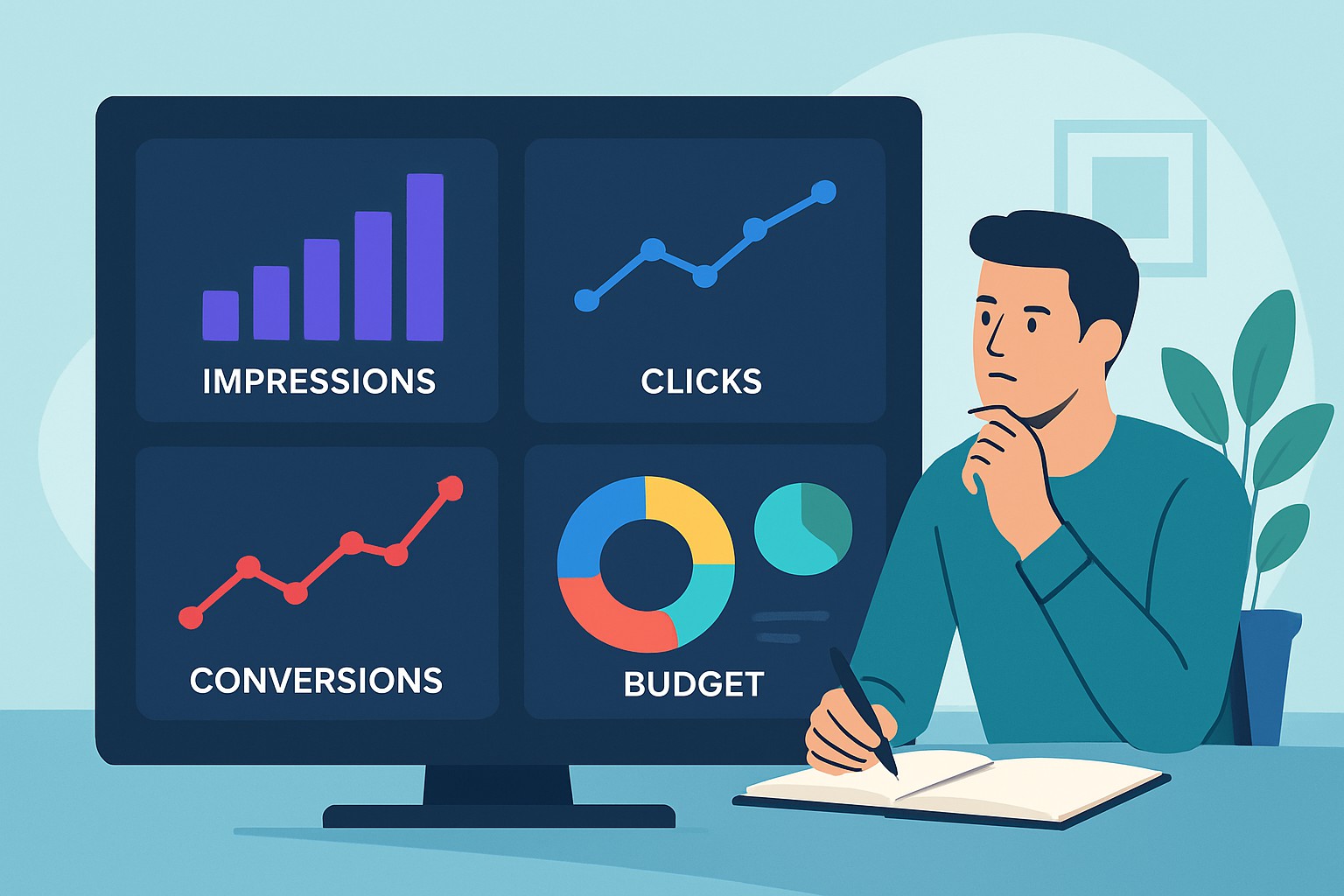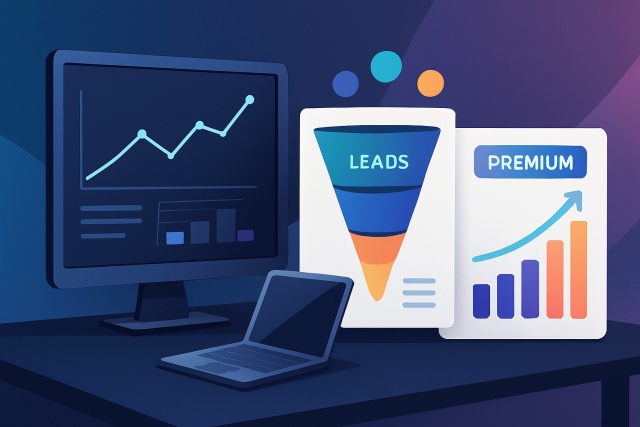Paid Media Strategy Framework That Actually Works


A paid media strategy is a carefully crafted game plan that leverages paid advertising channels to connect with specific audiences. The goal is to drive growth in a smart, targeted way amid today’s fiercely competitive digital marketing landscape.
Key Concepts That Really Matter in Paid Media Strategy
Paid media spans various channels where advertisers pay to grab prime spots including search ads, social media promos, display banners, video commercials and affiliate marketing.
- Search Ads: Paid listings on search engines that target exactly what users are seeking and serve as the digital equivalent of personalized recommendations.
- Social Ads: Paid campaigns on social media designed around user interests that effectively engage audiences based on their preferences.
- Display Ads: Visually appealing banners placed on relevant websites that enhance brand awareness without being intrusive.
- Video Ads: Compelling video content created to capture and maintain attention across multiple platforms.
- Affiliate Marketing: Performance-based partnerships that generate traffic and sales and create mutually beneficial outcomes.
- Key Terms: CPC (Cost Per Click), CPM (Cost Per Mille), CPA (Cost Per Acquisition) and ROAS (Return on Ad Spend) are essential terminology for anyone beginning in advertising.
- Targeting Options: Demographic, behavioral, geographic, contextual and retargeting strategies are critical methods that ensure ads reach the appropriate audience.
Defining Goals and KPIs for Your Paid Media Strategy to Focus on What Really Counts
Setting clear, measurable goals that truly align with your broader business objectives is a game-changer when it comes to tracking and fine-tuning paid media campaigns. Picking the right KPIs for each channel and campaign usually gives you way more useful insights into how they’re really performing
Nail down SMART goals that are clear and measurable, realistically achievable and relevant to your bigger picture. Have a firm deadline to keep you honest.
Double-check that your marketing objectives align with your sales targets and brand awareness priorities so there are no mixed signals.
Choose KPIs that make sense for each channel, such as CTR for search campaigns or engagement metrics for social media because one size rarely fits all.
Lean on past campaign data or industry benchmarks to set your performance standards. It’s like having a trusted map instead of wandering aimlessly.
Pick measurement methods that are straightforward and reliable like tracking pixels, UTM tags and trusted analytics tools. Keeping it simple often pays off.
Set up a regular reporting routine to check progress and tweak your strategies as needed. Think of it as a friendly check-in rather than a dreaded audit.
Getting to Know Your Audience and Finding the Best Way to Reach Them
A solid paid media strategy usually hinges on really knowing your audience inside and out. When you break down target groups by demographics and behaviors you’re far more likely to cook up campaigns that genuinely resonate and actually move the needle.
- Create detailed buyer personas that focus on what motivates your customers and the hurdles they face.
- Map out customer journeys carefully to make sure your messaging hits the right note at each step of their decision process—no one-size-fits-all here.
- Segment your audience by interests, purchase history and engagement so you’re not throwing spaghetti at the wall hoping something sticks.
- Customize your targeting with handy platform features like Facebook custom audiences or Google affinity groups to reach the people who matter.
- Lean on first-party data from CRM systems and website analytics to boost your accuracy—it’s like having a reliable GPS instead of guesswork.
- Use lookalike modeling to uncover fresh audiences that mirror your most valuable customers and help you grow without reinventing the wheel.

Team analyzing audience segmentation and buyer personas to optimize targeting strategy
Building Your Framework for Allocating a Paid Media Budget The Smart Way
Budget allocation demands thoughtful juggling by taking a hard look at how each channel is pulling its weight and where the business stands in its lifecycle. It also requires understanding what growth goals are driving the hustle. Leaning on methods like percentage-of-revenue or goal-based budgeting can make a world of difference.
| Channel | Typical Allocation % | Rationale | Expected ROI Range |
|---|---|---|---|
| Search Ads | 35% | Zeroes in on users showing clear intent, who usually convert like clockwork | 200-400% |
| Social Ads | 25% | Gives your brand a friendly nudge, sparking awareness and engagement through spot-on targeting | 150-300% |
| Display Ads | 15% | Keeps your brand visible and plays a steady supporting role in retargeting efforts | 100-200% |
| Video Ads | 15% | Builds emotional bridges by telling your story in a way that sticks with people | 120-250% |
| Affiliate | 10% | Smart partnerships that keep costs upfront low while delivering solid performance | 180-350% |
Best Practices for Creative Strategy and Ad Development Worth Remembering
Creating effective ad creatives is all about hitting the sweet spot between your audience’s tastes and the quirks of each platform and your campaign goals. Finding that balance where eye-catching visuals meet persuasive copy usually works wonders for boosting engagement and driving more conversions
- Write clear ad copy that highlights benefits and speaks to your target audience’s needs. Think of it like having a friendly chat rather than a hard sell.
- Use visuals that align with platform specs to guarantee your ads look sharp and perform well because nobody likes a blurry mess.
- Apply dynamic creative optimization to tweak your ads on the fly based on live data. This way you’re always one step ahead instead of stuck in the past.
- Run A/B tests on different creative elements to uncover versions that truly hit the mark. It’s like a taste test that helps you find what resonates.
- Tailor creative formats to each platform, whether it’s Stories on Instagram that demand a quick engaging snapshot or Responsive Ads for Search that adapt on the go. Each has its own vibe.
- Make sure every creative piece sticks to brand guidelines and ad policies. This keeps your messaging consistent and spares you the headache of rejections.
Choosing the Best Paid Media Channels for Your Business Finding the Perfect Fit Without Breaking a Sweat
Picking the right paid media channels usually means taking a hard look at your business goals and understanding how your audience behaves. It also means keeping an eye on budget limits and learning from how past campaigns performed.
- Take a good look at how each channel has actually performed in your industry up to now. Sometimes the results might surprise you.
- Think about where your target audience naturally hangs out online because that’s where your message needs to shine.
- Keep a close eye on the costs of each channel and how they fit into your budget. No one wants to blow their budget on something that doesn’t deliver.
- Get creative and see if you can mix these channels with your organic marketing efforts to really kick things up a notch.
- Make sure what each channel offers lines up perfectly with your campaign goals, whether you’re aiming to drive sales or boost brand awareness.
- Double-check how dependable the tracking and attribution are so you’re not chasing shadows but measuring the real impact.
Campaign Setup and Launch Your Handy Step-by-Step Guide
Setting up paid media campaigns is a bit like prepping for a big road trip—you start with creating the account and keep at it until the final launch reviews are wrapped up.
Get your ad accounts up and running and don’t forget to connect vital bits like domain verification and payment methods. Skipping these is a rookie mistake.
Choose campaign objectives that align with your big-picture paid media goals because it’s all about staying on target.
Fine-tune your audience targeting by digging into well-researched segments. Knowing your crowd makes all the difference.
Set budgets and pick bidding strategies that fit the type of campaign you’re running since there is no one-size-fits-all.
Upload and organize your ad creatives carefully to make sure they tick all the boxes for platform guidelines so you don’t get any surprises later.
Set up tracking with pixels, UTM parameters and conversion events to have eyes everywhere.
Before you hit launch, run through a thorough pre-launch checklist. QA those URLs, review every ad and double-check all your settings to catch anything that might slip through the cracks.
Handy Techniques for Keeping an Eye on Things, Reporting, and Fine-Tuning
Keeping a close eye on campaigns and letting the data lead the way is absolutely essential. Regularly checking performance means you can jump in with timely tweaks that really help you squeeze the most bang for your buck.
Create dashboards that pull together key performance data into one neat spot for quick, no-nonsense insights.
Keep a sharp eye on your core KPIs so you’re always in the loop on how your campaigns are really doing.
Catch underperforming ads and audience segments early before they start draining your budget.
Run A/B tests on the regular to fine-tune your targeting and creative choices—it’s like giving your campaign a constant tune-up.
Adjust bids and budgets with some flexibility, reacting to data trends and shifting goals like a pro.
Refresh creatives often to dodge ad fatigue and keep your audience interested, because stale ads are nobody’s friend.
Lean on attribution models to get the full picture of conversion paths and make budget decisions that actually make sense.
Advanced Approaches Involving Automation, AI, and Attribution Models That Really Make a Difference
Leaning on automation tools and AI-powered creative testing and advanced attribution models marketers can fine-tune their paid media performance with much greater precision.
- Lean on automated bidding platforms that tweak your bids in real time, depending on just how likely that conversion looks—it's like having a savvy assistant who never sleeps.
- Use AI-powered tools to rapidly test and fine-tune your ad creatives with more precision than ever—you might even catch things you would normally miss.
- Embrace multi-touch attribution models to make sure every marketing touchpoint along the conversion path gets its fair share of the spotlight—because everyone loves a bit of credit where it’s due.
- Pull together data from various channels for a seamless, all-in-one approach to campaign optimization—it’s like assembling a dream team of insights.
- Tap into predictive analytics to get ahead of the game, anticipating performance and smartly allocating budgets before the numbers even roll in.
- Dive into machine learning algorithms that dig deep to reveal hidden patterns and performance opportunities—sometimes the treasure is buried where you least expect it.
Common Challenges in Paid Media and How to Tackle Them Head-On
Many paid media campaigns hit a rough patch because their goals are not clearly defined or audience targeting misses the mark. Tracking is not properly set up, attribution issues fly under the radar, and creative updates get left on the back burner.
"In the world of paid media, leaning on data to steer your decisions, while keeping a nimble mindset to tweak strategies on the fly, often separates those campaigns that burn through budgets from the ones that actually deliver results. It is a bit like steering a ship—you've got to read the winds but be ready to tack when the tide shifts." - Digital Marketing Expert
Putting Your Paid Media Strategy Into Action with a Hands-On Guide That Actually Works
Dig deep into who your audience is and what makes them tick—this is the foundation of a solid paid media strategy. Then set clear data-driven goals that keep you honest. From there, spread your budget wisely across your strongest channels and whip up some tailored ad creatives. Get your campaigns set up with tracking you can rely on. Before you hit launch, give everything a good once-over—no shortcuts here. Once your campaigns are live, keep a close watch like a hawk on their performance. Make it a habit to regularly fine-tune things using A/B tests, bid adjustments and fresh creatives to keep the momentum going. As you get the hang of it, lean on automation and AI tools to scale smarter not harder. Expect to spend about two to four weeks on your initial research and setup, then launch your campaigns.




